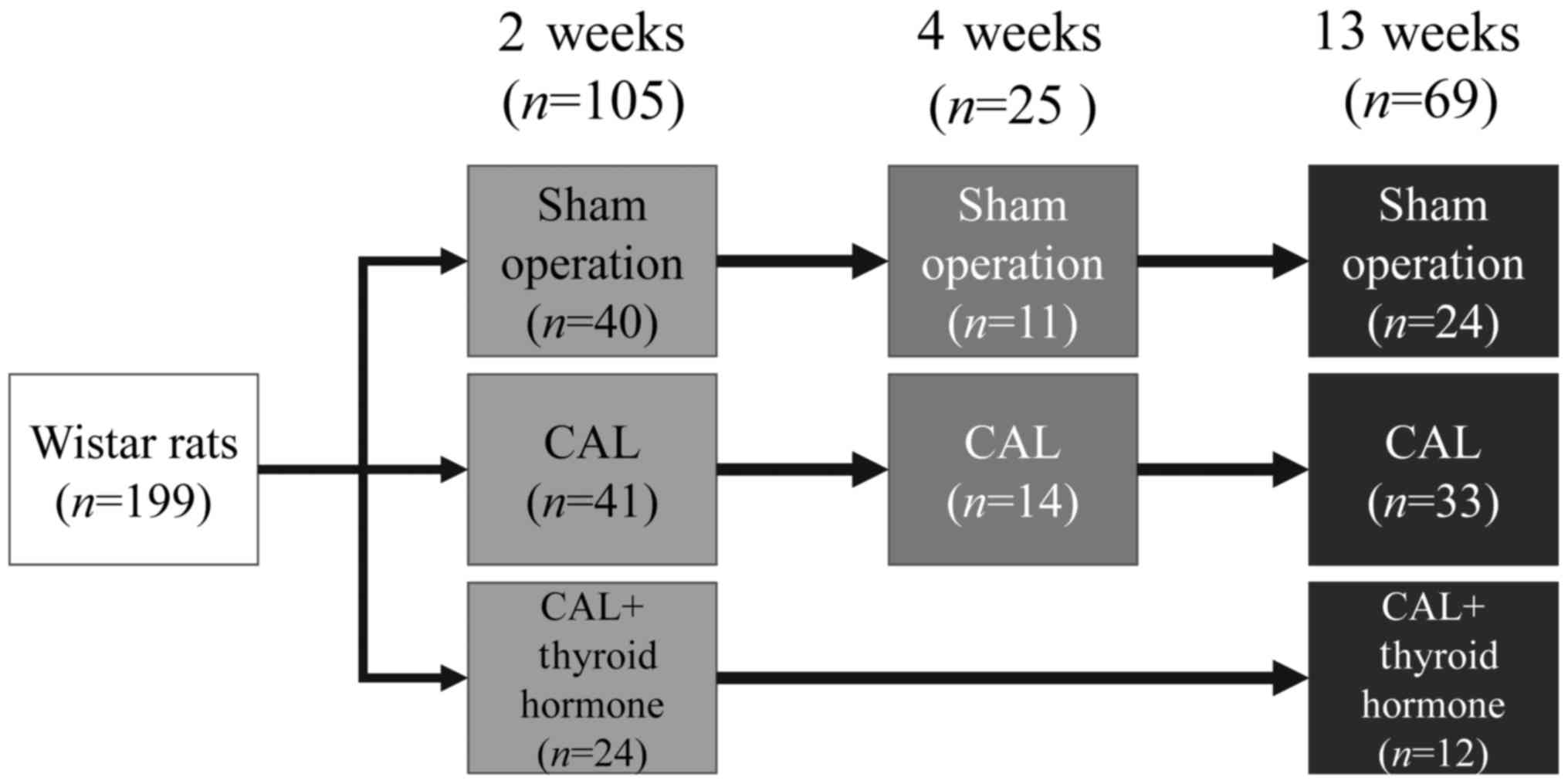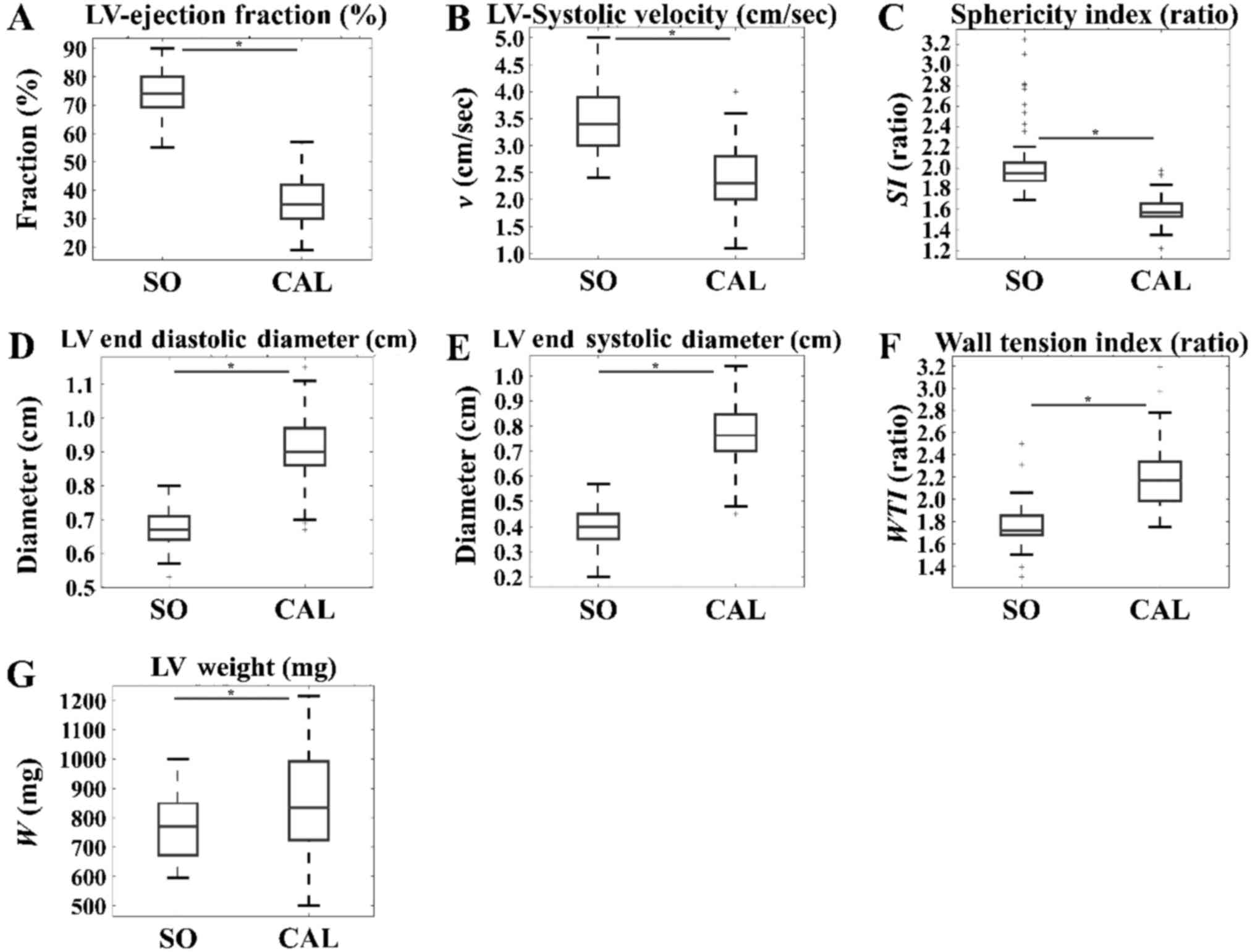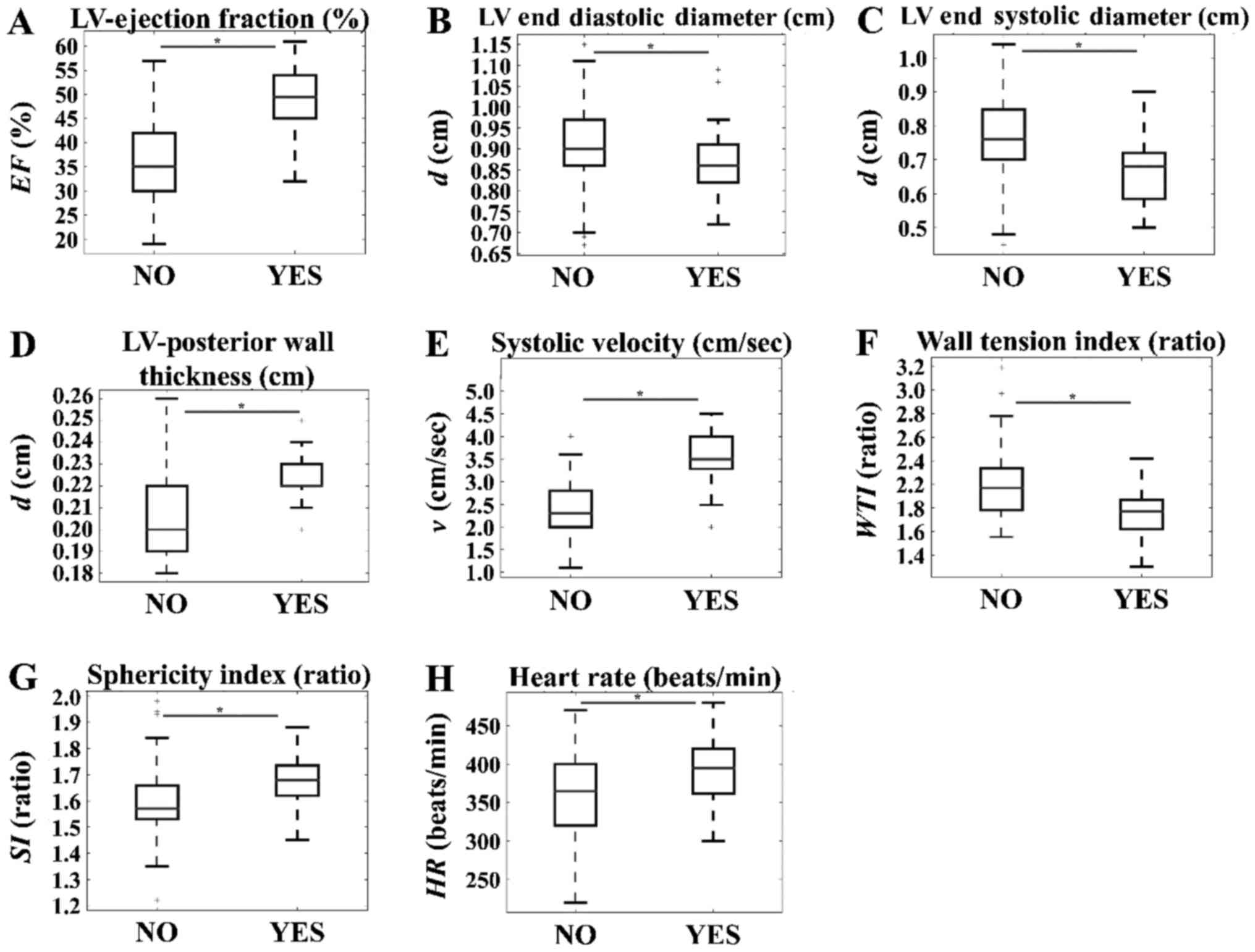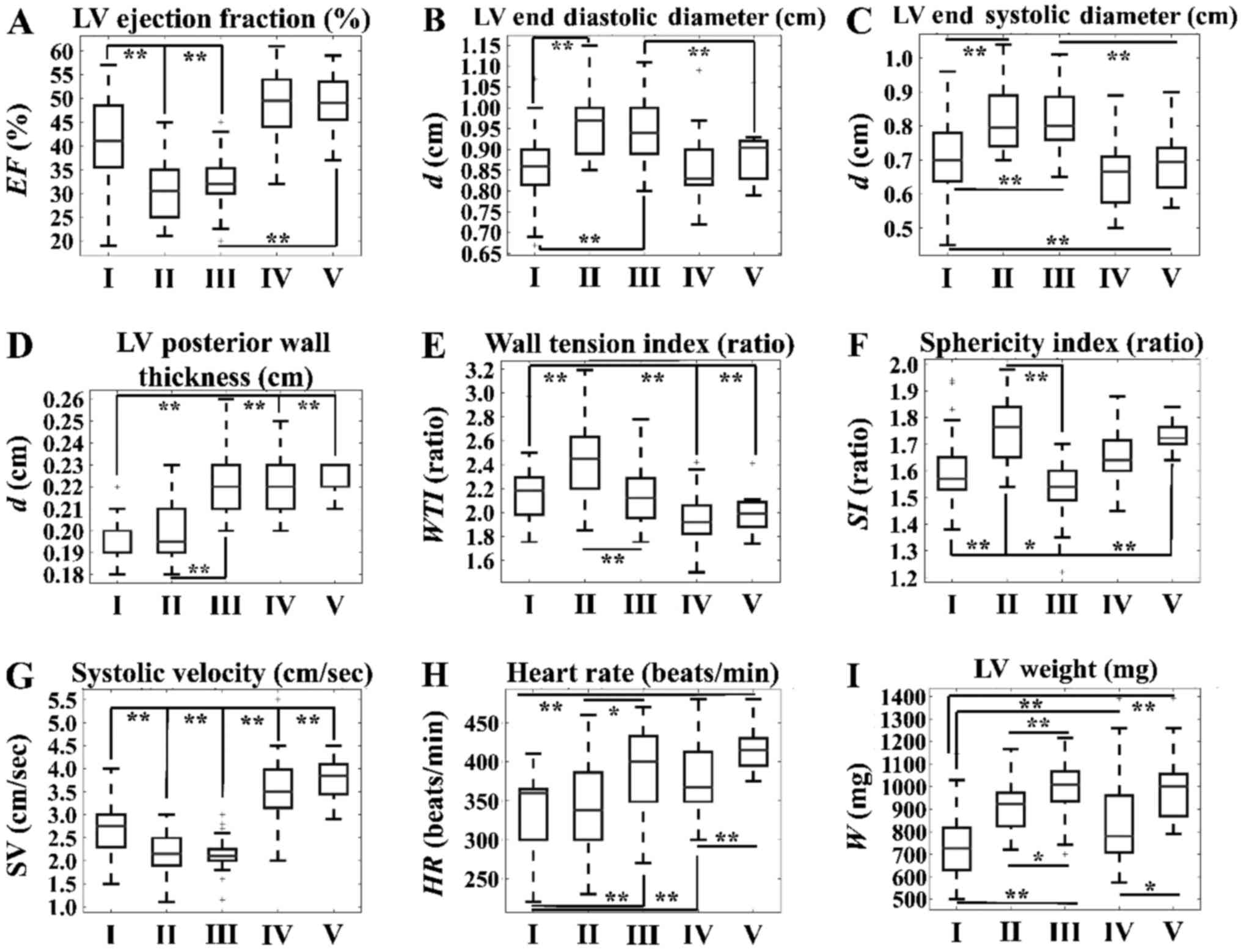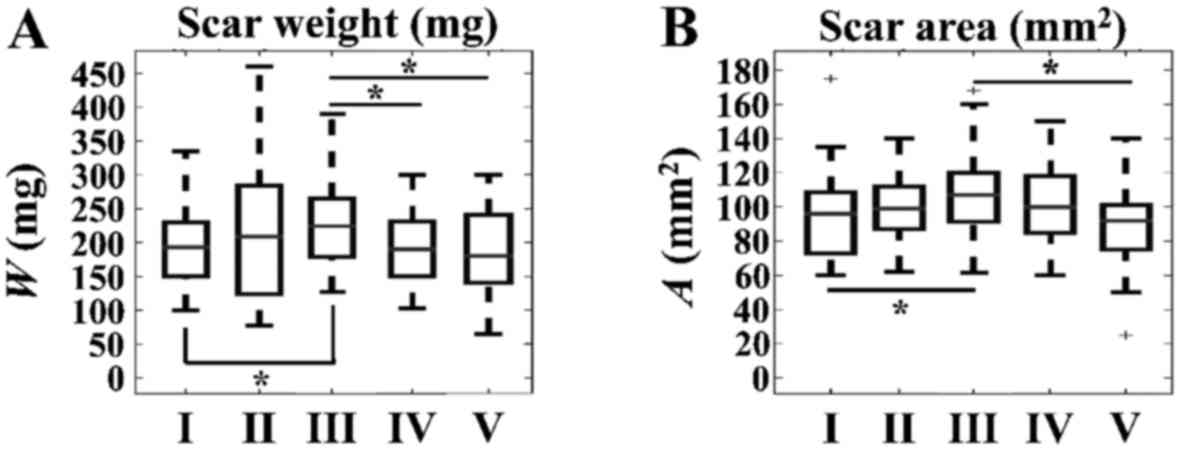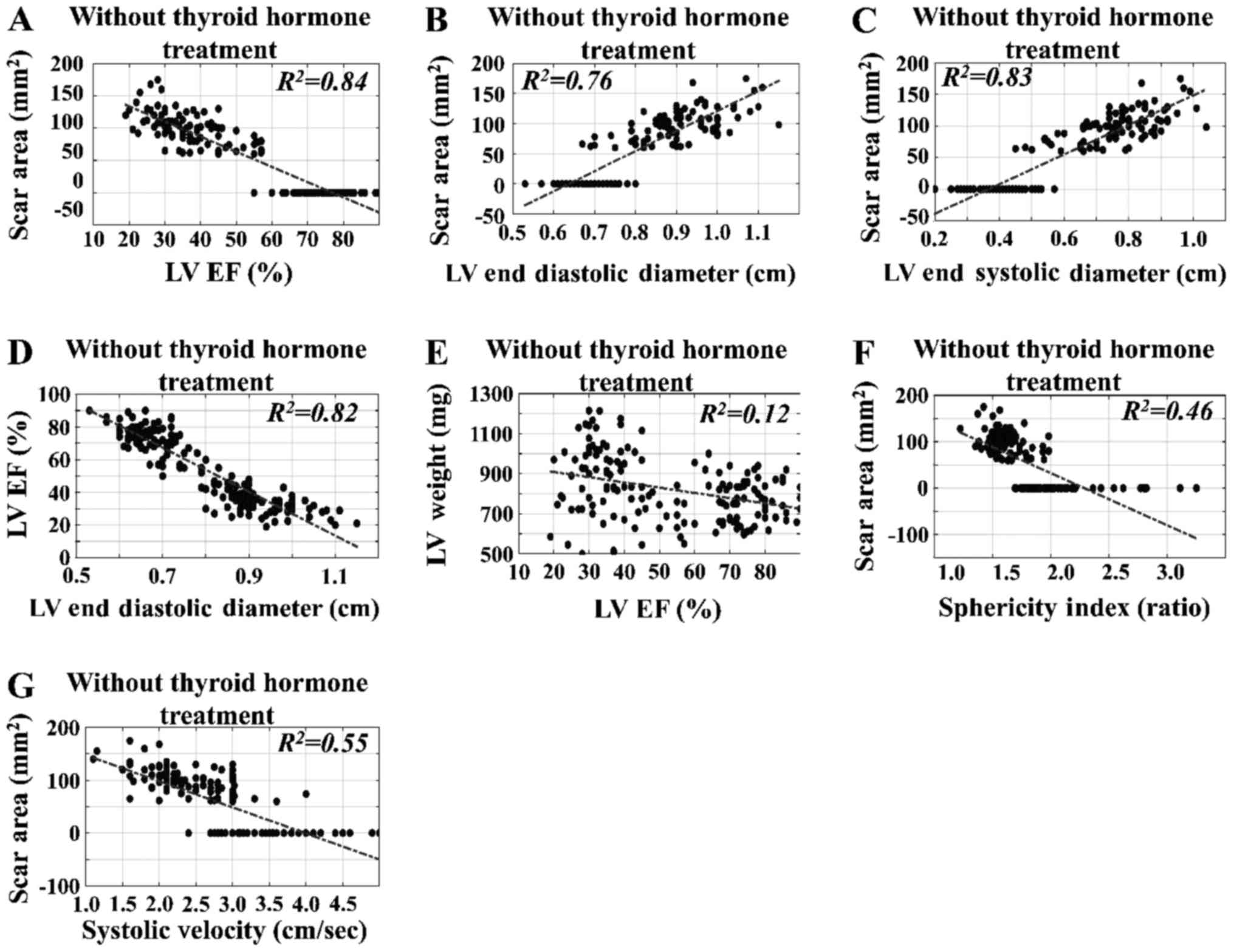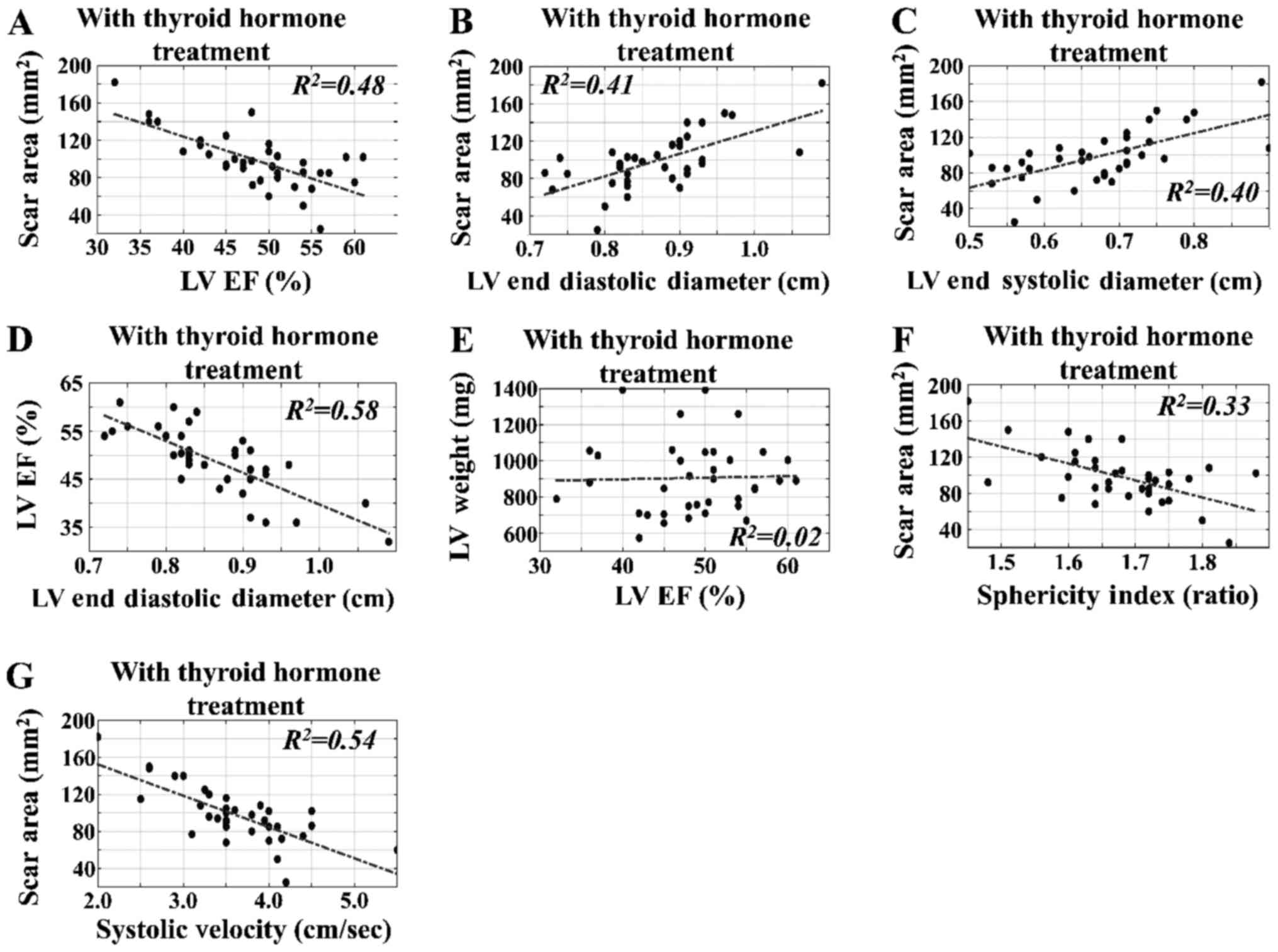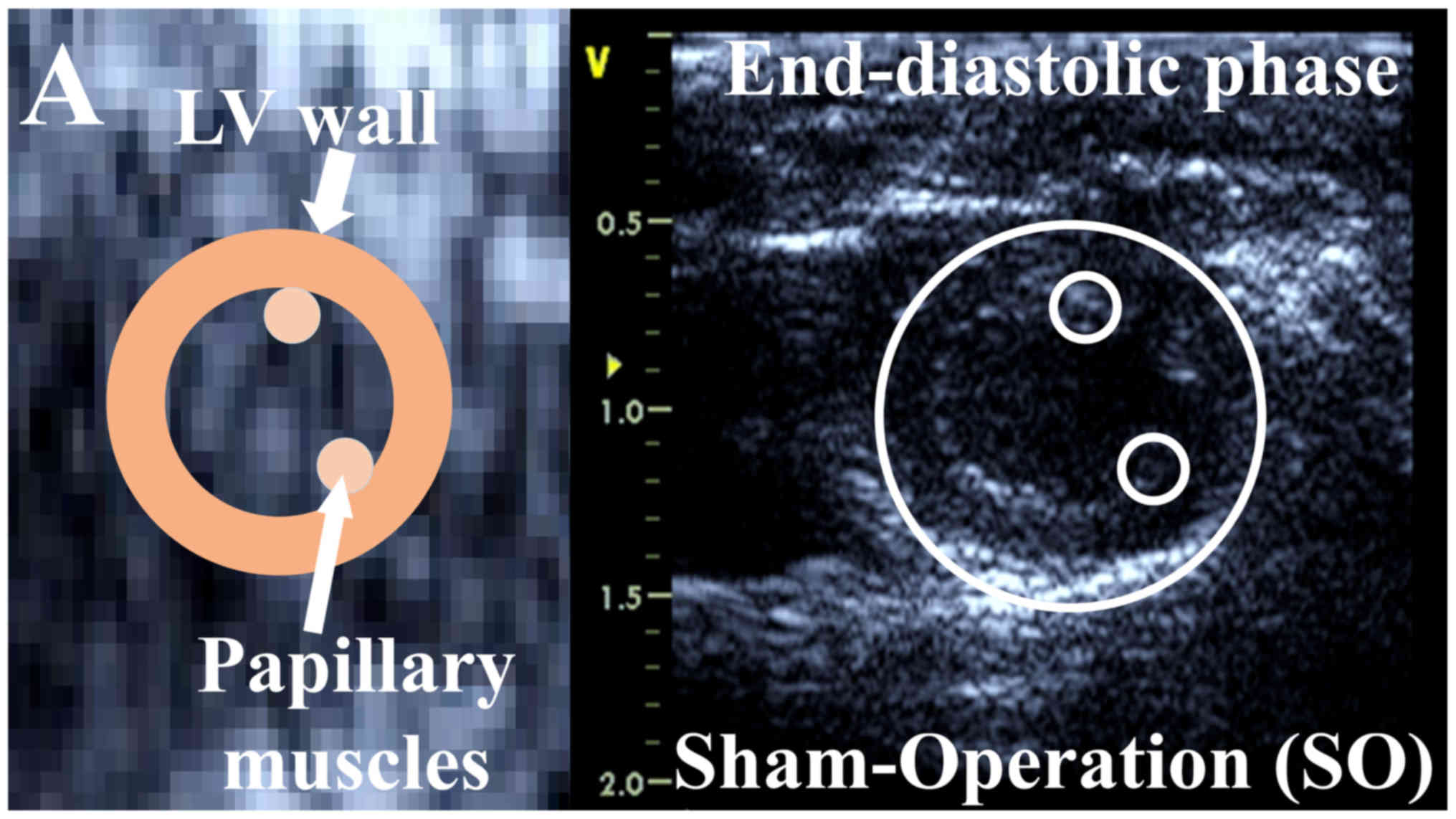|
1
|
Rajabi M, Kassiotis C, Razeghi P and
Taegtmeyer H: Return to the fetal gene program protects the
stressed heart: A strong hypothesis. Heart Fail Rev. 12:331–343.
2007. View Article : Google Scholar : PubMed/NCBI
|
|
2
|
Swynghedauw B: Molecular mechanisms of
myocardial remodeling. Physiol Rev. 79:215–262. 1999. View Article : Google Scholar : PubMed/NCBI
|
|
3
|
Lymvaios I, Mourouzis I, Cokkinos DV,
Dimopoulos MA, Toumanidis ST and Pantos C: Thyroid hormone and
recovery of cardiac function in patients with acute myocardial
infarction: A strong association? Eur J Endocrinol. 165:107–114.
2011. View Article : Google Scholar : PubMed/NCBI
|
|
4
|
Springeling T, Kirschbaum SW, Rossi A,
Baks T, Karamermer Y, Schulz C, Ouhlous M, Duncker DJ, Moelker A,
Krestin GP, et al: Late cardiac remodeling after primary
percutaneous coronary intervention-five-year cardiac magnetic
resonance imaging follow-up. Circ J. 77:81–88. 2013. View Article : Google Scholar : PubMed/NCBI
|
|
5
|
Bolognese L, Neskovic AN, Parodi G,
Cerisano G, Buonamici P, Santoro GM and Antoniucci D: Left
ventricular remodeling after primary coronary angioplasty: Patterns
of left ventricular dilation and long-term prognostic implications.
Circulation. 106:2351–2357. 2002. View Article : Google Scholar : PubMed/NCBI
|
|
6
|
Dargie H: Heart failure post-myocardial
infarction: A review of the issues. Heart. 91 Suppl 2:ii3–6;
discussion ii31, ii43-ii48. 2005. View Article : Google Scholar : PubMed/NCBI
|
|
7
|
Friberg L, Werner S, Eggertsen G and Ahnve
S: Rapid down-regulation of thyroid hormones in acute myocardial
infarction: Is it cardioprotective in patients with angina? Arch
Int Med. 162:1388–1394. 2002. View Article : Google Scholar
|
|
8
|
Cerillo AG, Storti S, Clerico A and
Iervasi G: Thyroid function and cardiac surgery: What should we
measure and when? Ann Thorac Surg. 89:1010–1012. 2010. View Article : Google Scholar : PubMed/NCBI
|
|
9
|
Pingitore A, Landi P, Taddei MC, Ripoli A,
L'Abbate A and Iervasi G: Triiodothyronine levels for risk
stratification of patients with chronic heart failure. Am J Med.
118:132–136. 2005. View Article : Google Scholar : PubMed/NCBI
|
|
10
|
Mourouzis I, Mantzouratou P, Galanopoulos
G, Kostakou E, Roukounakis N, Kokkinos AD, Cokkinos DV and Pantos
C: Dose-dependent effects of thyroid hormone on post-ischemic
cardiac performance: Potential involvement of Akt and ERK
signalings. Mol Cell Biochem. 363:235–243. 2012. View Article : Google Scholar : PubMed/NCBI
|
|
11
|
Pantos C, Mourouzis I and Cokkinos DV: New
insights into the role of thyroid hormone in cardiac remodeling:
Time to reconsider? Heart Fail Rev. 16:79–96. 2011. View Article : Google Scholar : PubMed/NCBI
|
|
12
|
Pantos C, Mourouzis I and Cokkinos DV:
Rebuilding the post-infarcted myocardium by activating
‘physiologic’ hypertrophic signaling pathways: The thyroid hormone
paradigm. Heart Fail Rev. 15:143–154. 2010. View Article : Google Scholar : PubMed/NCBI
|
|
13
|
Kalofoutis C, Mourouzis I, Galanopoulos G,
Dimopoulos A, Perimenis P, Spanou D, Cokkinos DV, Singh J and
Pantos C: Thyroid hormone can favorably remodel the diabetic
myocardium after acute myocardial infarction. Mol Cell Biochem.
345:161–169. 2010. View Article : Google Scholar : PubMed/NCBI
|
|
14
|
Mourouzis I, Giagourta I, Galanopoulos G,
Mantzouratou P, Kostakou E, Kokkinos AD, Tentolouris N and Pantos
C: Thyroid hormone improves the mechanical performance of the
post-infarcted diabetic myocardium: A response associated with
up-regulation of Akt/mTOR and AMPK activation. Metabolism.
62:1387–1393. 2013. View Article : Google Scholar : PubMed/NCBI
|
|
15
|
Pantos C, Mourouzis I, Markakis K,
Dimopoulos A, Xinaris C, Kokkinos AD, Panagiotou M and Cokkinos DV:
Thyroid hormone attenuates cardiac remodeling and improves
hemodynamics early after acute myocardial infarction in rats. Eur J
Cardiothorac Surg. 32:333–339. 2007. View Article : Google Scholar : PubMed/NCBI
|
|
16
|
Pantos C, Mourouzis I, Markakis K,
Tsagoulis N, Panagiotou M and Cokkinos DV: Long-term thyroid
hormone administration reshapes left ventricular chamber and
improves cardiac function after myocardial infarction in rats.
Basic Res Cardiol. 103:308–318. 2008. View Article : Google Scholar : PubMed/NCBI
|
|
17
|
Pantos C, Mourouzis I, Tsagoulis N,
Markakis K, Galanopoulos G, Roukounakis N, Perimenis P, Liappas A
and Cokkinos DV: Thyroid hormone at supra-physiological dose
optimizes cardiac geometry and improves cardiac function in rats
with old myocardial infarction. J Physiol Pharmacol. 60:49–56.
2009.PubMed/NCBI
|
|
18
|
Grossman W, Jones D and McLaurin LP: Wall
stress and patterns of hypertrophy in the human left ventricle. J
Clin Invest. 56:56–64. 1975. View Article : Google Scholar : PubMed/NCBI
|
|
19
|
Gaudron P, Eilles C, Kugler I and Ertl G:
Progressive left ventricular dysfunction and remodeling after
myocardial infarction. Potential mechanisms and early predictors.
Circulation. 87:755–763. 1993. View Article : Google Scholar : PubMed/NCBI
|
|
20
|
Holmes JW, Borg TK and Covell JW:
Structure and mechanics of healing myocardial infarcts. Annu Rev
Biomed Eng. 7:223–253. 2005. View Article : Google Scholar : PubMed/NCBI
|
|
21
|
Sallin EA: Fiber orientation and ejection
fraction in the human left ventricle. Biophys J. 9:954–964. 1969.
View Article : Google Scholar : PubMed/NCBI
|
|
22
|
Li F, Chen YG, Yao GH, Li L, Ge ZM, Zhang
M and Zhang Y: Usefulness of left ventricular conic index measured
by real-time three-dimensional echocardiography to predict left
ventricular remodeling after acute myocardial infarction. Am J
Cardiol. 102:1433–1437. 2008. View Article : Google Scholar : PubMed/NCBI
|
|
23
|
D'Elia N, D'Hooge J and Marwick TH:
Association between myocardial mechanics and ischemic LV
remodeling. JACC Cardiovasc Imaging. 8:1430–1443. 2015. View Article : Google Scholar : PubMed/NCBI
|
|
24
|
Kichula ET, Wang H, Dorsey SM, Szczesny
SE, Elliott DM, Burdick JA and Wenk JF: Experimental and
computational investigation of altered mechanical properties in
myocardium after hydrogel injection. Ann Biomed Eng. 42:1546–1556.
2014. View Article : Google Scholar : PubMed/NCBI
|
|
25
|
Wong SP, French JK, Lydon AM, Manda SO,
Gao W, Ashton NG and White HD: Relation of left ventricular
sphericity to 10-year survival after acute myocardial infarction.
Am J Cardiol. 94:1270–1275. 2004. View Article : Google Scholar : PubMed/NCBI
|
|
26
|
Palazzuoli A, Beltrami M, Gennari L,
Dastidar AG, Nuti R, McAlindon E, Angelini GD and Bucciarelli-Ducci
C: The impact of infarct size on regional and global left
ventricular systolic function: A cardiac magnetic resonance imaging
study. Int J Cardiovasc Imaging. 31:1037–1044. 2015. View Article : Google Scholar : PubMed/NCBI
|
|
27
|
Konermann M, Sanner BM, Horstmann E, Grötz
J, Laschewski F, Josephs W, Odenthal HJ and Sturm A: Changes of the
left ventricle after myocardial infarction-estimation with cine
magnetic resonance imaging during the first six months. Clin
Cardiol. 20:201–212. 1997. View Article : Google Scholar : PubMed/NCBI
|
|
28
|
Goktepe S, Abilez OJ, Parker KK and Kuhl
E: A multiscale model for eccentric and concentric cardiac growth
through sarcomerogenesis. J Theor Biol. 265:433–442. 2010.
View Article : Google Scholar : PubMed/NCBI
|
|
29
|
Lee LC, Wall ST, Genet M, Hinson A and
Guccione JM: Bioinjection treatment: Effects of post-injection
residual stress on left ventricular wall stress. J Biomech.
47:3115–3119. 2014. View Article : Google Scholar : PubMed/NCBI
|
|
30
|
Kourou K, Exarchos TP, Exarchos KP,
Karamouzis MV and Fotiadis DI: Machine learning applications in
cancer prognosis and prediction. Comput Struct Biotechnol J.
13:8–17. 2014. View Article : Google Scholar : PubMed/NCBI
|



